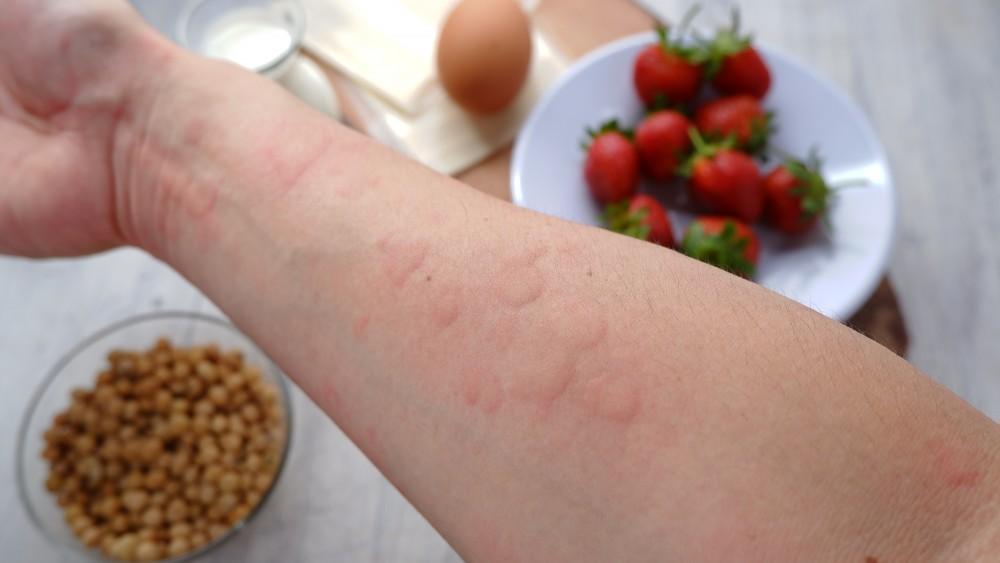Peanut allergy is one of the most prevalent and potentially life-threatening food allergies worldwide, particularly in children. This condition is characterized by an overactive immune response to peanut proteins, leading to a spectrum of symptoms ranging from mild discomfort to anaphylaxis. As peanut exposure can occur even through trace amounts, stringent management and awareness are essential to prevent accidental reactions and ensure quality of life.

Understanding Peanut Allergy and Its Immunologic Basis
Peanut allergy is an IgE-mediated hypersensitivity reaction, where the immune system mistakenly identifies peanut proteins as harmful. Upon exposure, specific IgE antibodies trigger mast cells and basophils to release histamine and other inflammatory mediators, leading to allergic symptoms.
Key Allergenic Proteins in Peanuts:
- Ara h 1, Ara h 2, and Ara h 3: Major peanut allergens responsible for severe reactions
- Ara h 8: Associated with milder symptoms due to cross-reactivity with birch pollen
- Ara h 9: Common in Mediterranean populations, linked to peanut lipid transfer proteins
These proteins are resistant to heat and digestion, contributing to the allergy’s severity and persistence.
Common Symptoms and Clinical Manifestations
Symptoms of peanut allergy typically appear within minutes of exposure and vary in severity depending on individual sensitivity and the amount of allergen ingested.
Mild to Moderate Symptoms:
- Skin reactions: hives, redness, eczema flare-ups
- Gastrointestinal discomfort: nausea, vomiting, abdominal cramps
- Respiratory signs: nasal congestion, coughing, sneezing
Severe Allergic Reaction – Anaphylaxis:
Anaphylaxis is a medical emergency that can escalate rapidly, requiring immediate intervention with epinephrine.
- Throat tightness or swelling
- Difficulty breathing, wheezing
- Drop in blood pressure, dizziness
- Loss of consciousness
Diagnosis of Peanut Allergy
Clinical Evaluation:
A detailed clinical history is the foundation for diagnosis, focusing on:
- Timing and nature of symptoms
- Type and quantity of peanut consumed
- Response to treatments such as antihistamines or epinephrine
Confirmatory Diagnostic Tools:
| Test | Purpose | Interpretation |
|---|---|---|
| Skin Prick Test (SPT) | Detects immediate IgE-mediated hypersensitivity | Wheal ≥3 mm compared to control = positive |
| Serum Specific IgE | Measures peanut-specific IgE antibodies | >0.35 kUA/L often considered positive |
| Component-Resolved Diagnostics | Identifies specific allergenic proteins (e.g., Ara h 2) | Higher risk of anaphylaxis with Ara h 2 |
| Oral Food Challenge (OFC) | Gold standard for diagnosis | Conducted in hospital under supervision |
Risk Factors and Epidemiology
Key Risk Factors:
- Family history of atopy or allergies
- Eczema in early infancy
- Delayed introduction of peanuts in diet
- Coexisting food allergies (e.g., eggs, milk)
Global Prevalence:
Peanut allergy is most common in Western countries, with prevalence rates around 1–2% of children. However, cases are rising globally, driven by dietary changes, environmental exposures, and genetics.
Treatment and Emergency Management
Immediate Treatment: Epinephrine
Epinephrine (Adrenaline) is the first-line treatment for anaphylaxis. It reverses airway constriction and raises blood pressure.
- Intramuscular injection into the thigh
- Repeat dose if no improvement within 5–15 minutes
- Always seek emergency medical attention after use
Supportive Medications:
- Antihistamines for mild reactions (non-life-saving)
- Corticosteroids to prevent late-phase reactions
- Beta-agonists for bronchospasm
Allergen Avoidance and Labeling Regulations
Strict avoidance of peanuts is critical to prevent accidental exposure. This includes:
- Reading ingredient labels carefully
- Avoiding cross-contaminated foods and buffets
- Being cautious in restaurants and bakeries
- “May contain” labels indicating shared equipment use
In the U.S., Food Allergen Labeling and Consumer Protection Act (FALCPA) mandates clear labeling of peanut-containing foods.
Long-Term Management and Desensitization Approaches
Oral Immunotherapy (OIT)
OIT involves gradually increasing doses of peanut protein to desensitize the immune system.
- Palforzia: FDA-approved OIT for children aged 4–17
- Reduces severity of accidental reactions
- Requires daily dosing and medical supervision
Emerging Therapies:
- Epicutaneous immunotherapy (EPIT) – peanut patches
- Sublingual immunotherapy (SLIT) – oral drops/tablets
- Monoclonal antibodies (e.g., omalizumab) – adjunctive therapy
Living with Peanut Allergy: Prevention and Education
Strategies for Patients and Caregivers:
- Always carry epinephrine auto-injectors (e.g., EpiPen, Auvi-Q)
- Educate friends, teachers, and caregivers on use
- Wear medical alert identification
- Develop a written emergency action plan
Preventive Feeding Guidelines:
The LEAP (Learning Early About Peanut Allergy) study demonstrated that early introduction of peanuts (4–6 months) in high-risk infants significantly reduced allergy development.
Psychological and Social Impact
Peanut allergy impacts quality of life due to:
- Constant fear of accidental exposure
- Social anxiety and exclusion
- Dietary restrictions
- Stress in school and travel environments
Support groups, education programs, and counseling can alleviate emotional burdens and empower families.
Peanut allergy demands lifelong vigilance and personalized management. While complete avoidance remains the primary defense, advances in immunotherapy and accurate diagnostics offer hope for improved safety and tolerance. As awareness grows and treatment options expand, patients can expect better outcomes and enhanced quality of life.